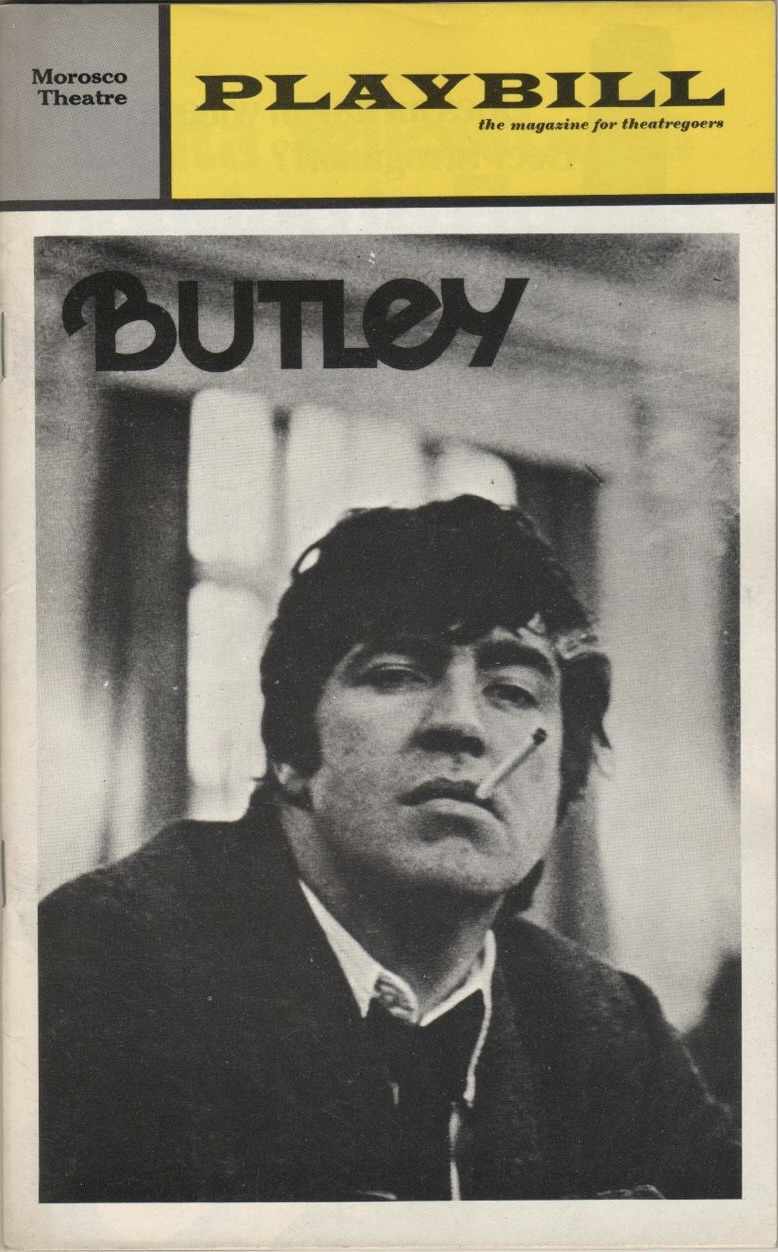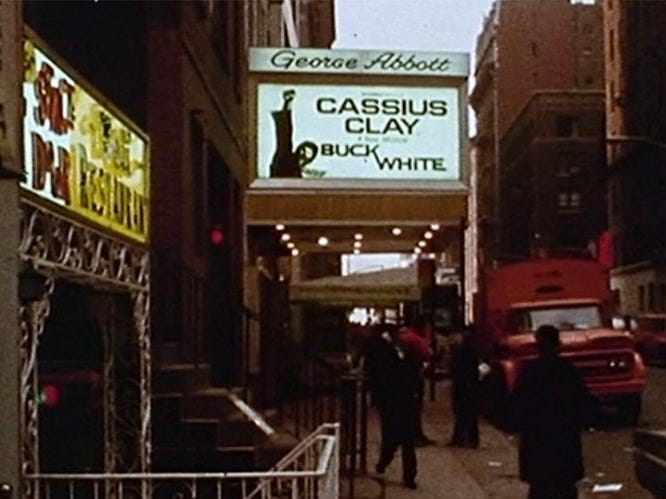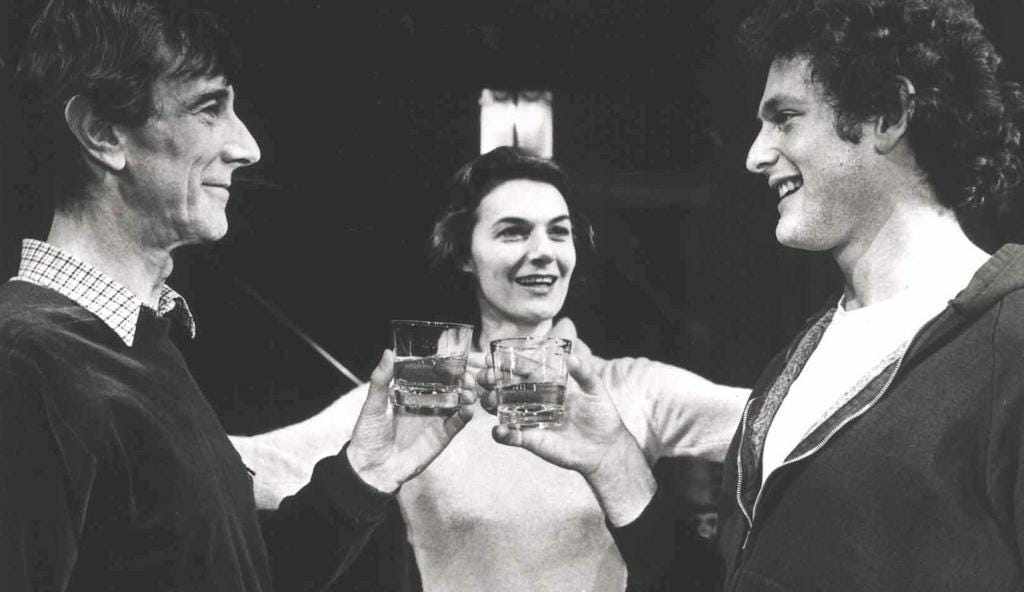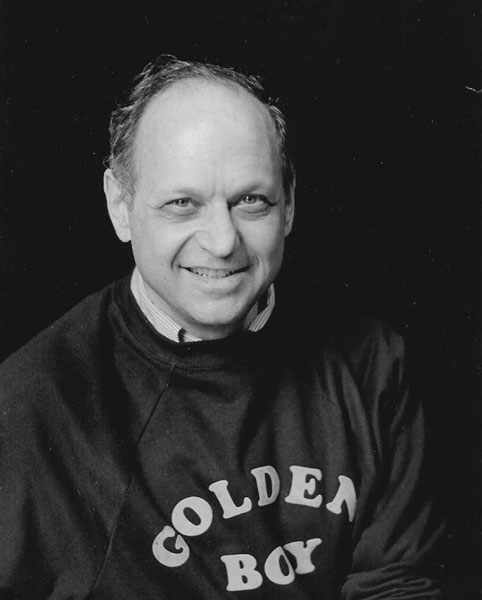
Though most are familiar with his remarkable career, it might come as a surprise that Sidney Poitier had to overcome the handicap of arriving in America as a young man barely able to communicate properly in English. In 1943, at age fifteen, his family came to live in Miami from their native Bahamas. A year later, the young Sidney fled to New York City where , after a series of odd jobs and a stint in the Army, decided to pursue an acting career. His Broadway debut came in 1946 as part of a 65-member "all-Negro" cast (as it was advertised) in a revival of Aristophanes' Lysistrata. The Afro-Bahamian actor was nineteen-years-old by then and still struggling with his accent and stage fright. In a story he relates in his autobiography, This Life, Poitier was so terrified on opening night that he forgot his first line (one of only a few he had in the play). He made something up on the spot, and in his humiliation, felt he'd let everyone down. He was so upset; he went home and didn't take a bow with the company at the curtain call. The next day, he was told no one cared, and a producer in attendance liked him so much that he hired Poitier to replace in the Broadway play Anna Lucasta, which due to a subsequent touring production, kept him employed for three years.
Breaking through in films with his riveting performance in 1955’s The Blackboard Jungle, Poitier began piling up major credits by 1959 when he was in the rarified position to be approached to star in a new play. It helped that earlier in the year, Poitier became the first Black actor nominated for the Academy Award for Best Actor in The Defiant Ones. This made him not only a star, but one who everyone was watching closely. Every role he took not only defined him as an actor but put him in the unenviable position of having to be an exemplar of his race.
The play was A Raisin in the Sun, written by a Black playwright, Lorraine Hansberry (only twenty-nine at the time). Once Poitier’s participation was secured, not only did it mean it would get produced, but it would be presented on Broadway (excepting for one role), with an all-Black cast. Sure, there was precedent for this, but in this case, with the world watching Sidney Poitier’s every move, the play was under undue pressure to perform well. If it closed out of town, it might have led people to say Poitier wasn’t the same sort of draw at the higher price level of theatre tickets he was at the movies. Or that Broadway was no place to test young African American writers, let alone a woman. Lloyd Richards, the play’s first-time director, also happened to be African American. It would be the first play by a Black woman to open on Broadway, and the first Broadway play with a Black director. It was in this pressure cooker that the work began to bring the show to New York.

It is common knowledge that the original production was a great success. Ms. Hansberry was anointed an important voice and it was only due to her tragic death from cancer at age thirty-four that we were not treated to more work from this gifted writer. But there were hardships in bringing the play to Broadway, well-chronicled in 2001's You Can’t Do That on Broadway!, written fifty-two years later by the show’s principal producer, Philip Rose. In it, he tells of how difficult it was raising the necessary funds and how arduous the out-of-town tryouts in Philadelphia, New Haven and Chicago were. But A Raisin in the Sun got to the promised land of Broadway, opening triumphantly on March 11, 1959, at the Ethel Barrymore Theatre. Besides Poitier, the play reads now as a future who’s who of Black artists.
Among its cast members, Louis Gossett would later become the first African American actor to win a Best Supporting Actor Oscar for his performance in An Officer and a Gentleman; Diana Sands went on to Broadway stardom, culminating in her portrayal as Saint Joan in 1968 at Lincoln Center, before she, too (like Hansberry) died from cancer before the age of forty; and Ruby Dee, who gave us a lifetime of important roles on the stage and screen and who (alongside her husband, Ossie Davis — the actor that assumed the role of Walter Younger Jr. when Poitier left the original production) was at the forefront of the campaign for human rights in this country. Also in the cast was thirteen-year-old Glynn Turman, who has had a rich sixty plus-year career, recently appearing in last year's Ma Rainey's Black Bottom. And then there was Claudia McNeil, who at the time of the play’s premiere was already a leading African American actress in the theatre. Her understudy, Beah Richards, would later portray Sidney Poitier’s mother in Guess Who’s Coming to Dinner, for which she was nominated for an Academy Award. All in all — an exceptional company.

In his memoir, Rose tells what an “improbability” his career as a theatre producer was by way of A Raisin in the Sun. As a Jew from the Lower East Side of Manhattan, he marvels how he possessed the audacity to think he could mount such a problematic show without ever having produced anything in his life (he had been a record executive). But alongside David J. Cogan, an accountant, they made history together. According to his New York Times obituary, “Rose had known the playwright, Lorraine Hansberry, since they had both worked in a summer camp in the Catskills, he as a singer on the entertainment staff, she in the dining room. She confessed to him that she had literary dreams.”
Beautiful, right? But the rejoinder from Rose puts it in proper perspective. According to his wife, his response to Hansberry was “I hope you do become a writer, because you’re a lousy waitress.”
In the book, Rose recounts the mystery behind what drove him to take on the play, musing on whether his days as a young man bill collecting in poor Washington, D.C. neighborhoods gave him insight into what was going on in the black community. “Why I was so open to becoming this person, I have no idea. I also don’t know why any of those people, given the circumstances under which they met me, cared enough to reach out, to enlighten me, and to point me in a new direction. What I do know is how grateful I am for what was done for me by a group of generous, remarkable people who happened to be black. And while I don’t know where or who they now are, I know that for anything important I may have done or will do with my life, I am trying to say, ‘thank you’ to them.”

Due to Rose’s diligence, A Raisin in the Sun is now a classic of world theatre, recorded for posterity on film in 1961 (with nearly the entire original cast intact). Two subsequent television versions and two major award-winning Broadway revivals have continued to keep it in the public's eye. Every time I see a production of it, I am bowled over by its power and timelessness. In my opinion, it is as great an American play as Thornton Wilder's Our Town.
It should never be forgotten that by utilizing his star power and acting talent, Sidney Poitier was essential to the success of A Raisin in the Sun. And though he achieved other great things in his life and career (major screen star, film and theatre director, author, husband and father and humanitarian), his contribution to American Theatre is all but secured by making it possible for Lorraine Hansberry's dream to come true, giving us all the great gift of her beautiful play.
This column has been adapted from one published last year.
If you enjoy these columns, check out Up in the Cheap Seats: A Historical Memoir of Broadway, available at Amazon.com in hardcover, softcover and e-book. Also, follow me here on Scrollstack and feel free to email me with comments or questions at Ron@ronfassler.org.





















Write a comment ...